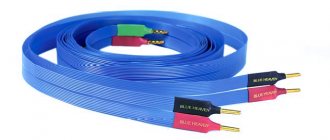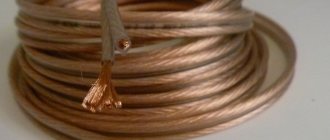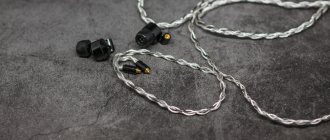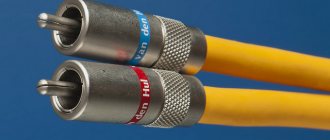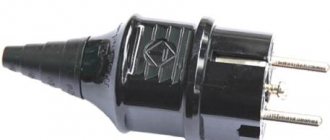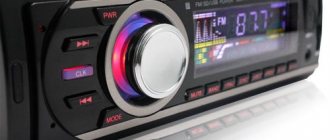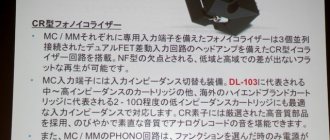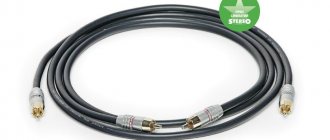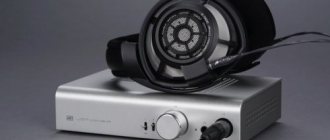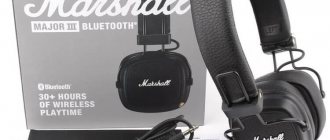About the brand
In a sea of similar brands and cable manufacturers, one company stands out... This company is Nordost, creator of the famous Flatline cable.
Today, Nordost offers a wide selection of high-quality cables designed for use in all possible home entertainment applications. Leveraging technology developed for the aerospace, medical and computer industries, Nordost's unique patented designs and ownership of the FEP (tetrafluoroethylene-hexafluoropropylene copolymer) extrusion process allow it to achieve a level of product quality that other cable companies can only dream of.
At Nordost, cable design is not a matter of "black magic" based on trial and error or pseudoscientific claims. On the contrary, all Nordost cable products are manufactured with a degree of precision in construction that is incomparable to anything in the cable industry. All measurable characteristics of Nordost cables - capacitance, inductance and signal conductivity - are close to ideal, which can significantly reduce the filtering effect. That's why Nordost puts the technical parameters of the cables on the packaging. The result of this technological excellence is a product that will bring you the joy of incomparable music enjoyment.
Nordost Corporation, 200 Homer Avenue, Ashland, MA 01721, USA www.nordost.com
Brochures
- 1780_nordost_newapproachestoaudiomeasurement_rus.pdf
- 1481_nordost_catalogue_2015_rus.pdf
Articles and publications
- What Hi-Fi?
Sound and video - No. 02/03 | 2016 Nordost Blue Heaven LS – “First tests” section - What Hi-Fi?
Sound and video - No. 3 | 2014 Nordost Valhalla 2 – “At first glance” section - What Hi-Fi?
Sound and video - No. 5 | 2013 Nordost presentation – “Company News” section - What Hi-Fi?
Sound and video - No. 2 | 2013 Nordost Sort Kone TC – “At first glance” section - What Hi-Fi?
Sound and video - No. 12 | 2012 Nordost Heimdall 2 interconnect – “At first glance” section - What Hi-Fi?
Sound and video - No. 11 | 2012 New products in the Barnsly assortment - “Company News” section - What Hi-Fi?
Sound and video - No. 11 | 2012 Nordost Heimdall 2 acoustic – “At first glance” section - What Hi-Fi?
Sound and video - No. 7 | 2012 Nordost Blue Heaven Power – “At first glance” section - What Hi-Fi?
Sound and video - No. 6 | 2012 Nordost Frey 2 – “At first glance” section - What Hi-Fi?
Sound and video - #1 | 2012 Nordost Seminar – “Company News” section - Stereo & Video
- #9 | 2014 Arcam BDP300, Arcam AV888, Arcam D33, Arcam airDAC and Nordost Sort Kones – “Installation” section - Stereo & Video
- No. 7 | 2013 Exhibition “High End Show 2013” – section “Report” - Stereo & Video
- #5 | 2013 Nordost presentation – “Events” section - Stereo & Video
- #8 | 2012 Supra DB06-EU and Nordost Qbase QB4 – “Review Test” section - Salon AV
- No. 2 | 2014 Exhibition “Moscow High End Show 2013” – section “From the Scene” - Salon AV
- No. 1 | 2012 Presentations of Nordost, System Audio and CYP - “Brand News” section - Hi-Fi.ru
– Barnsly Sound Organization at the HI-FI & HIGH END SHOW 2016 exhibition – “Audio” section - Hi-Fi.ru
– Nordost Valhalla 2: 10 soldiers in support of the general – “Hi-End Gear” section - Hi-Fi.ru
– Report from CES 2014 – “Events” section - AVreport.ru
- Nordost eliminates vibrations and gives your system a new life - “Home Appliances” section - AVreport.ru
– NORDOST cables – maximum speed technologies – “Home Appliances” section - TONEAudio magazine
– №6 | 2016 Tonearm cables from Nordost – “Review” section - Hi-Fi+
- No. 3 | 2016 Joe Reynolds, Nordost: cables, application manual - “Master Designers” section - Hi-Fi+
– Nordost Norse cables: Heimdall 2 – “Equipment Review” section - The Absolute Sound
- #2 | 2022 Interconnect and speaker cables Odin 2 – “Equipment Report” section - hiendgear.com
- April 16, 2014 | Valhalla 2 network cable – “Tests” section - Headphone.Guru
– Nordost Blue Heaven – headphone cable: highest quality at an affordable price – “Accessories & Tweaks” section - Digital Audio Review
- #4 | 2016 Nordost Purple Flare Power – “Reviews” section - Fresh HiFi
– Nordost Conference – “Events” section
Chinese non-Nordost strikes a crane
Nordost is a well-known company that produces cables from affordable to incredible prices, and we will not discuss it today.
And attention will be drawn to the Chinese interconnect cable, which, in terms of the configuration of the flat arrangement of copper cores, is quite reminiscent of the Nordost Red Dawn cable (Red Dawn) costing 10,000 rubles ($155) - by the company's standards - for nothing. This is what the original Nordost looks like:
The characteristics of the original are as follows: 20 cores, silver-plated monocrystalline copper of high purity 99.999999% OFC Dielectric - polyvinyl chloride RCA connectors Gold-plated connectors and contacts Impedance 75 Ohms
The Chinese interconnect cable is not positioned as a clone at all, it is just a cable with a similar arrangement of conductors and looks like this:
The characteristics of the Chinese cable are as follows:
Insulation: fep Conductor: 99.9999% silver plated OFC Material: micron silver plated over 99.99999% OFC Capacitance: 8.7 pF/ft Inductance: 0.13uH/ft Propagation delay: 94% speed of light
According to these parameters, if they are reliable, then it even surpasses the original, but only 18 per channel lived in it.
Yeah, you’ll say, that’s what the dog rummaged through, but... The original, as I counted from the photo, has only 20 wires, for two channels, i.e. 10 per channel. And the Chinese have 18 silver-plated veins per channel, i.e. 36 cores per cable.
This is “kyu” and Kin-dza-dza.
I purchased this cable for a simple reason: I needed another RCA interconnect cable. By the way, I am also familiar with the original Nordosts, a friendly audiophile has expensive Nordost speaker cables, and I myself also have a simpler original acoustic cable - Nordost Flat Line Gold MK2.
I was looking for a specially silver-plated interconnect, because it is they that most convey the contrast of high frequencies and emphasize maximum resolution. The fairy tale tells itself quickly, but the work is not done quickly, and yet in my hands a box with a cable that arrived from China is 5 times cheaper than the original, which indirectly in terms of parameters is even twice as simpler (the original is simpler).
What does an excited audiophile do when he receives the coveted package? Correctly, without waiting for suitable conditions, he tears the box in the desire to get to the contents.
To be honest, I wasn’t going crazy waiting for a new interconnect cable, since I’m already using a cable bought in China based on Canare, which up to this point has been wonderful and provided a wide audio range and an excellent level of detail.
And I didn’t order another exactly the same cable only out of a desire to try something different - maybe it would turn out to be even more interesting, you never know.
The non-Nordost, non-Red Dawn cable was nicely packaged in mesh so as not to scratch the RCA connectors (silver-plated?). Not long ago, as an alternative, a real analog amplification method, I connected a Chinese tube amplifier to my audio path, which was favorably received by me for its transparent, solid low end and “tube” softness. Amplifier on tubes 2x 6L6 + 2x 6n8p + kenotron, single-cycle.
It was to this that I connected the newly purchased cable with a flat configuration of silver-plated copper conductors.
I’m always honest, so it’s stupid to write that “that’s honest,” but this is a turn of phrase that shows the sincerity of the writer. And honestly, I was really surprised that the new cable gave me new information from the recording. If on the old Canare interconnect, very clear, microdynamic, swirling juice, I heard an excellent jazz sound, here two new points were noted - the sound became noticeably three-dimensional, and the sound became noticeably richer in nuances that were almost not audible. In general, when I connected a tube amplifier to my setup, I got a timbrally rich and solid sound in the lower register, but lost it in three-dimensionality, the sound seemed to collapse in stereo, and only “stereo” effects remained three-dimensional. With the new cable, the three-dimensionality returned to approximately the level of transistor amplifiers. On the new Chinese non-Nordost cable, microdynamics began to be more clearly defined - they became more exciting.
The sound has changed noticeably. If on Canare I listened to a drum and it said “boom” in a very detailed and transparent manner and it was categorical, then non-Nordost suddenly and quite often reported that the sound actually sounds like “boom-boom” or “boom-bow” " Having heard this, I began to listen to the sound of Canare - and discovered these after-sounds, but they were so far away and so veiled that they were not emphasized at all in my consciousness. Non-Nordost with new information added a new dimension of naturalness and involvement. The non-Nordost sounded incredibly detailed, transparent, with rich microdynamics and timbres, and quite thick, I just felt the level of my path - 2x 6L6 + 2x 6n8p + kenotron (single-cycle) + Yamaha NS-1000x + Saber 9038PRO DAC + Muses02/ 03, rose even higher than where it was previously in its audio classification. The cymbals sounded richer, with more detail, the drums sounded richer, and there was no sibilance on the vocals, the vocals sounded great. In total, the sound with a Chinese non-Nordost cable has the following characteristics: pronounced micro-detailed sound dimensionalization thick low-frequency base very high detail rich “texture” of sounds All that remains is to present to you a demo listening to the cable taken on my Xiaomi Redmi Note 7 phone.
Due to the fact that YouTube blocked the video because of some Japanese copyright holders of the music, which I included to demonstrate the cable (what insanity), I offer a link to the Yandex disk.
https://yadi.sk/i/WHfRmixwXMHlrA
In the recording one can clearly hear the airiness, spaciousness, the sound flies without knowing boundaries. The instruments are natural, not held in place by anything artificial. I have a slight feeling that the sound “textures” are being simplified, but I attribute this to the fact that the amplifier, although excellent in sound, is very cheap. The sound is soft, gentle, thick at the bottom. The second video was chosen to be more energetic.
Three-dimensional beautiful sound with filigree macro-texture of sound. All that remains is for you to leave your comments under this review to inspire the creation of new reviews.
NORDOST
Nordost Corporation was founded in 1991. Nordost now offers a wide range of high-quality cables designed for use in all possible home entertainment applications. Using technologies created for the aerospace, medical and computer industries, its own patented unique developments allow Nordost to achieve a level of product quality that other cable companies can only dream of.
The first audio cable released in 1992 was Flatline Gold. It was a revolutionary flat speaker cable whose extruded fluoroplastic jacket made Flatline Gold an ideal solution for running under carpet or inside a wall. It was soon discovered that placing conductors in a flat shell gave amazing results in the field of sound.
Nordost is the only company in the world that has equipment for extruding Teflon dielectric. For this reason, Nordost cables have unique properties - both low capacitance and low inductance, and the signal propagation speed is up to 96% of the speed of light. The physical parameters of even the cheapest cables under the Nordost brand are much higher than those of cables from other manufacturers, which significantly reduces the filtering properties of the cable during signal transmission.
In 1997, the SPM cable was developed, with which Nordost entered the world of High End. Its name was an abbreviation for the words Speed, Precision and Musicalit. The SPM was a flat cable with round, silver-plated copper conductors. SPM instantly reached the top of popularity, receiving a lot of rave reviews around the world.
The next step was to create a new Quattro-fil interconnect using Micro Mono-Filament technology, which would later become a hallmark of Nordost products.
The proprietary Micro Mono-Filament technology consists of using a layer of air between the conductor and the Teflon dielectric, which, in turn, reduces the contact of the insulating material and the conductor by more than 80%, since a fluoroplastic thread is wound around each core. Created on the basis of Dual Micro Mono-Filament technology, the cable consists of cores wrapped in a double spiral of Teflon insulator. As a result, the contact of the conductor with the dielectric is reduced by 85%. In 1999, the acclaimed Valhalla cable was released, combining silver-plated oxygen-free copper (OFC) conductors with Dual Micro Mono-Filament technology. The Nordost Valhalla cable took the industry to a whole new level and instantly replaced the SPM cable - compared to it, it is more versatile and transmits the signal with the least loss and distortion.
The company's latest development, the Odin cable, made a real splash on the world market in 2007. The patented Dual Micro Mono-Filament technology was also used here. The unique musicality and breathtaking purity of the signal completely justify the price of the Odin cable.
All cables under the Nordost brand are covered with a special insulating material and have amazing wear resistance - they can withstand huge temperature changes, do not break, do not split and are resistant to moisture and chemicals.
Cable plagiarism. Products of the company “NordOst”
Raidho C-1.1 speaker system (price per pair - $15,000), my attention was drawn to the internal wiring, or rather not the wiring or soldering itself, but the speaker wire itself. Having rummaged through the description, I found that the speaker wire in these speakers is from the company NordOst . The company is serious and very famous, especially among audiophiles. The prices for their products are simply astronomical. But the product itself is admirable, everything is done beautifully.
My attention was attracted by their technology, which is called “Micro Mono-Filament”, this can be seen in the example of their “Valhalla” cable, which was born in 1999, and as the company claims, this is their calling card, and they came up with everything themselves. The “Odin” cable is another NordOst miracle.
The company was founded in 1991 in the USA. In the photo its founder is Joe Reynolds
Speaker cable NordOst Valhalla
Valhalla and Brahma speaker cables, slightly larger
Speaker cable NordOst Odin 2
As the company itself describes, the essence of the technology is that the core consists of using a layer of air between the conductor and the Teflon dielectric, which makes it possible to reduce the contact of the insulating material and the conductor by more than 80% due to the fact that a fluoroplastic thread is wound around each core. here .
The whole essence of technology close-up
Now about the same technology, but in our language. This type of insulation is called cordel insulation (this is an air-plastic insulation formed by a cordel applied in a helical spiral to the inner conductor of the cable) and it is far from new. At the very least, it was invented so long ago that such a company as NordOst was not even in the plan. Since Soviet times, such cores have been used in long-distance communication cables. As for polyethylene insulation and polyethylene cord, such cables are more than 30 years old. There is also paper insulation with a paper cord, such cables are even older. And this is a fact that I personally saw.
Here are the real photos (reminds me of nothing?):
Several cores of our production. This is polyethylene
The same veins, but larger
Well, macro:
I didn’t look for who came up with cordel insulation, but that doesn’t matter. What is all this for? Nowadays, you can take a technology (in our case, a conductor with cord insulation) that has been developed over the years - silver-plate the copper core, weave the cord with two wires and not one, and that’s it, you have a ready-made cable. Why not make a patent?
That’s what she did, “dressed up” the old technology, passed it off as her invention, wrote about how their cables transmit sound super quickly and musically, and now they can put it on sale for a lot of money. It’s another matter when the company itself comes up with a truly “zero” technology. But here, so openly and without blushing, it’s too much. Trust in such a company disappears immediately.
I'm not an audiophile myself and I don't listen to cable. And everything written above once again confirms that all these tricks with cables from various companies are a useless pumping of money from your pocket and a very good profit into their pockets.
Don't listen to cable, listen to music.
Author: LDS , especially for ldsound.ru
2016
Nordost Leif cable line test
The Nordost Leif line of cables is no longer entirely new, but I personally have not previously had the opportunity to carefully get acquainted with them and their properties, either individually or in various combinations. And as part of this test, I had a chance to study almost the entire line.
The test included four models of interconnects and speaker cables - White Lightning, Purple Flare, Blue Heaven and Red Dawn, as well as Blue Heaven network cables. Before testing, the wires went through a standard warm-up procedure, and here I can notice that the process is slow and not particularly pleasant at some stages - the sound does not develop immediately. Another important point: the cables in our test are longer than the average - interconnects are 2nd, acoustic cables are 4th. This somewhat complicated the work of the subjects, since not all cables retain the harmony of their signature with increasing length.
Speaker cables can be cut using either “feathers” or spades. The cables are convenient for connection, but require careful handling during use.
Structurally, the cables are similar - the cross-section of the conductors increases from model to model, but the design as a whole remains the same. The conductors of interconnect and speaker cables are made of 6N silver-plated copper; Teflon is used as a dielectric. The geometry of the cables is borrowed from the previously developed senior lines of Nordost cables. All wires are quite convenient to use. The interconnects are thin and flexible, equipped with high-quality connectors and equipped with all necessary markings. The speaker cables, as you would expect from Nordost, are flat, with parallel conductors. They are trimmed with comfortable feathers, but can also be equipped with blades. Everything about the connection is familiar and convenient, except that the speaker cables should be protected from external mechanical influences to avoid damage - the ribbon structure is delicate and requires careful handling. Blue Heaven networkers are made of 6N copper, they are not thick and moderately flexible.
During the test, I tried the cables individually and in various combinations. We can say right away that I expected smaller differences between the models. It would seem that the design difference is small, but in terms of influence on the sound, each model turned out to be a completely independent value. At the same time, interconnects and speaker cables of the same model turned out to be quite similar in sound, and combinations of cables of different levels almost always turned out to be less expressive than a pair of the same name. The question of how much Nordost is needed to avoid overkill remains open - this is still a very individual point, depending on the specific system. In my test paths, the “interconnect + speaker cable + network cable” harness almost always turned out to be somewhat redundant, and the combinations of interconnect and speaker cable fit quite harmoniously. Among the general features, one can note high dynamics, even in younger models, and a tendency to precise and collected bass transmission with a clearly defined lower limit.
Network Nordost Blue Heaven is a moderately flexible and convenient cable. The plug and hardware connector are quite suitable and cause no complaints.
If we move on to specifics, we get the following. White Lightning interconnect. The sound is moderately airy, cool and detached, with a slight emphasis on the upper mids. The presentation is light neutral. The detail is not bad, but the after-sound fades faster than we would like. There is no sharpness in the sound, and some mechanicalness can be traced in the handwriting. The bass is small and not very full. The scene turns out to be more intimate. Acoustic White Lightning provides good intelligibility and increases the scale of the stage. A slight shift to the mid-upper range and the chamberness of the bass are noticeable, but these features do not go beyond the acceptable limits. In general, the combination turns out to be somewhat dry and cool, but quite integral within the framework of its style. For a budget system and when you need to collect sloppy sound, add dynamics or remove excess poorly controlled bass, this option is quite interesting.
Purple Flare. The interconnect has a more textured, detailed sound. There is almost no coldness, a very slight but audible softening of the sound is noticeable. The presentation is both dynamic and delicately insinuating at the same time. It's just a little lacking in emotion. The sound is more harmonious, with moderately voluminous bass, an open and dim midrange and slightly emphasized highs. The stage is wide and deep, but lightly transparent. Acoustic Purple Flare works in approximately the same vein, emphasizing the same character traits. But there is no pronounced imbalance between character traits. This combination is more likely to be seen in a system balanced in the frequency range, especially if you need to add transparency. But in combination with sluggish or, on the contrary, excessively sharp tracts, I would not risk trying it.
Interblock Blue Heaven. Good dynamics and detail are complemented by quite pronounced musicality. There is both intelligibility and melodious unity. The range presentation is relatively smooth, with a slight emphasis on the mid frequencies. The sound has a pleasant elegance and balance. The bass is not very deep, but of good quality. The stage is wider and richer than that of previous subjects, but slightly less airy. Acoustic Blue Heaven most affects the depth and expressiveness of the scene and adds quantitatively low frequencies. The handwriting as a whole remains the same melodiously integral, multi-colored, but without excessive brightness. In my opinion, the Blue Heaven line is the most consistent in character and the most versatile of all.
Red Dawn. The interconnect cable is more dynamic and transparent than previous models, but there is a certain force component in the sound, an emphasis on the fundamental tones and excessive marching assertiveness. The handwriting is no longer so light, but more densely fleshed out. The sound, while maintaining high dynamics and good detail, is more rich, voluminous and dense. There is clearly more bass, although, as in previous cases, it has a clear lower limit. The stage is wide, deep, but not very airy. Acoustic Red Dawn does not add any edge, but makes the sound more massive and assertive. Blue Heaven networkers add dynamics to the sound, while at the same time there is a slight emphasis on the upper mids and high frequencies. Or, if there was already an accent, it intensifies somewhat. You can also hear an increase in bass depth without changing its quality component. Otherwise, their style fits well into the general character of the Nordost Leif line.
